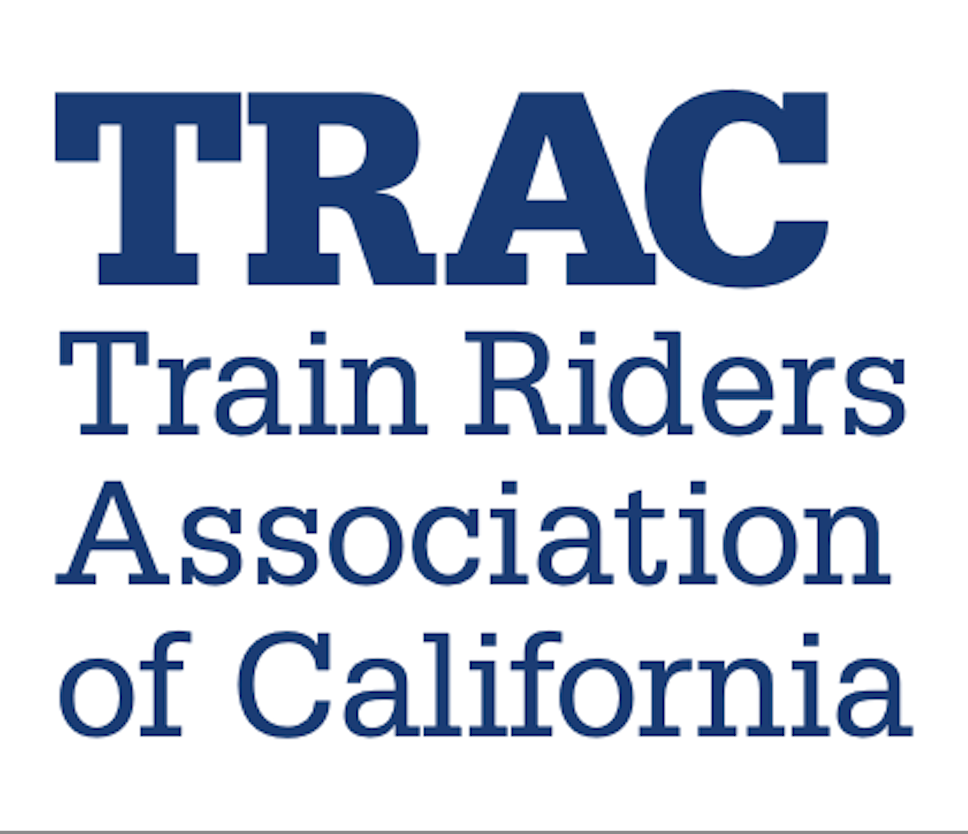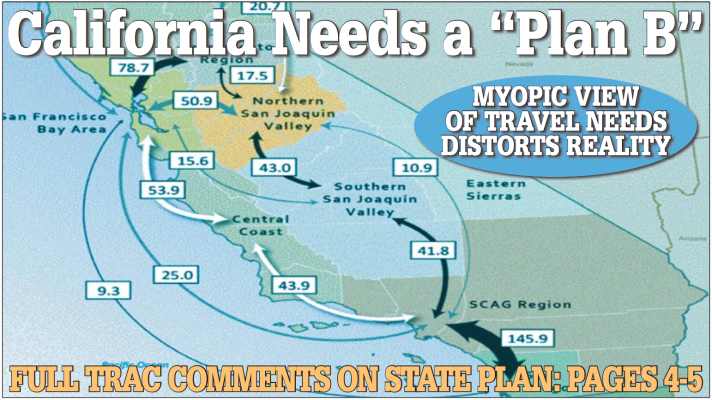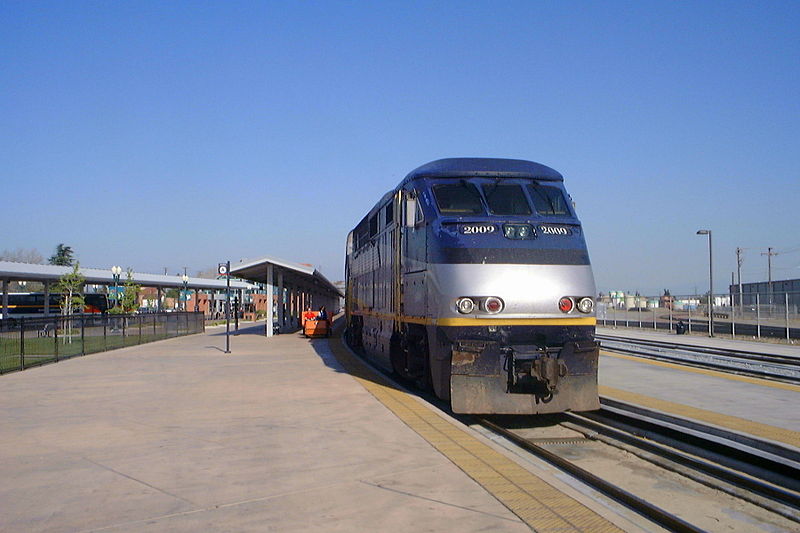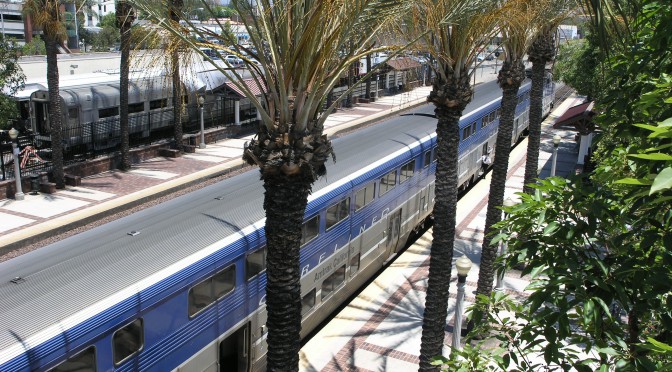HyperLoop May Work, Technically Speaking – But Not as Hyped
By Michael D. Setty
California Rail News Editor & Webmaster
When evaluating the potential for any new technology such as HyperLoop, consider that many new products fail. One source says that 85% of all new consumer products fail within two years (http://www.foodnavigator-usa.com/Markets/Why-do-85-of-new-CPG-products-fail-within-two-years; another says that 95% fail (http://hbswk.hbs.edu/item/clay-christensens-milkshake-marketing). Still another source says 30%-49% (http://www.quora.com/Is-the-80-product-failure-rate-statistic-actually-true). For the “information” industry–which I take as including virtually all “high tech” firms–only 37% are in business after four years (http://www.statisticbrain.com/startup-failure-by-industry/).
In any case, failure is often likely and skepticism is called for. However, unlike many “gadgetbahn” technologies pushed for decades by a wide assortment of promoters and technologists, the Elon Musk-inspired “HyperLoop” has obtained substantial financial backing from venture capitalists despite the high risk of the technology failing to work as advertised.
The “serious entry” into the technology is HyperLoop One, a startup founded by well-known, successful high-tech entrepreneurs who so far have managed to raise $160 million from venture capital and other investors. HyperLoop One has also obtained serious interest from the United Arab Emirates for a proposed line between Dubai and Abu Dhabi. There are also proposals for a HyperLoop network connecting Melbourne and Sydney, Australia and nearby cities. The company has set up a test site for its technologies and concepts outside Las Vegas.
A video outlining HyperLoop One activities and their proposal for the United Arab Emirates is linked here: http://hyperloop-one.com/blog/full-presentation-hyperloop-ones-historic-agreement-dubai-rta.
In a clever public relations move, HyperLoop One held a worldwide competition asking for submittals from interested regions and parties vying for construction of the first operational HyperLoop routes. This contest generated more than 2,000 entries, which have now been whittled down to 35 finalists, from which HyperLoop One will select a handful for construction of the first routes (assuming it all works in the first place).
A competing effort is HyperLoop Transportation Technologies. HTT has attempted to obtain sufficient investment through crowd-sourcing, but is well behind HyperLoop One. HTT proposed construction of a test track in western Kings County in 2015, but so far the company has only 30 employees and investor support so far has been much less than HyperLoop One (though $100 million+ in mostly non-cash contributions have been claimed (http://hyperlooptransp.com/).
Blending HyperLoop with Personal Rapid Transit (PRT)
A significant twist in HyperLoop design and operations compared to Elon Musk’s original proposal is addition of a “personal rapid transit” (PRT) element. HyperLoop One’s HyperLoop capsules would be able to accept different kinds of cargo and passenger pods, including cargo containers, pods designed to carry different classes of passengers, self-driving cars, and even human-driven cars (e.g., in a manner roughly analogous to Amtrak’s Auto Train).
Each HyperLoop station would be designed with numerous docking bays designed to load and unload these various kinds of pods to/from HyperLoop capsules. Like earlier personal rapid transit concepts, self-driving pods would automatically travel from their origin to the HyperLoop terminal, automatically board a HyperLink capsule, reversing the process at the destination city through to the ultimate destination of the cargo or people using a pod.
In 2011, a system of independently-routed PRT pods began successful operation at London, England’s Heathrow International Airport between a remote parking lot and Terminal 5. However, to date the technology has not spread beyond Heathrow. Since the 1970’s, multiple PRT concepts and promoters have come and gone, mainly because such technologies offered no significant advantage over proven technologies such as rail and buses.
Some aspects of HyperLoop One’s proposed technological approach suggest that the HyperLoop concept may prove technically feasible. However, there are other aspects that also suggest that operationally, HyperLoop cannot live up to the hype, potentially undermining the economic case for the HyperLoop concept.
Switch to Maglev-Based Technology
The first major innovation made to the Musk concept by HyperLoop One was choosing magnetic levitation (“maglev”) as its basic vehicle and track technology. Unlike the unproven “air bearings” proposed in Elon Musk’s original paper, maglev technology is technologically proven and feasible from an engineering standpoint for both vehicles and track.
Several maglev lines operate around the world. The “flagship” line is the Shanghai Maglev between Central Shanghai and Shanghai International Airport (http://www.smtdc.com/en/), which began operation in 2004. The Shanghai Maglev has proven to be an operational success with speeds up to 267 mph and travel times of 7:20 to 8:10 for a 19 mile journey. However, the line has been an economic failure, failing to cover any significant share of its capital costs.
Maglevs have been proposed in several busy intercity corridors, such as Tokyo-Osaka to supplement the Shinkansen high-speed rail (HSR) line that opened in 1964, Baltimore-Washington, D.C., and several corridors in China including extensions to the Shanghai Maglev. However, maglevs have even higher construction costs than conventional high speed rail, a factor which has stymied new routes to date.
In-Service Speeds vs. Design Speed, and Curves
As previously mentioned, the current HyperLoop One concept marries a modification of the original Elon Musk proposal of “fast trains in a near-vacuum tube” to personal rapid transit. The first problem is that HyperLoop line-haul capacity will be considerably less than projected if safety parameters similar to other “guideway” (bureaucratic speak for “railroad”) technologies are followed.
Operational and safety experience from existing HSR systems suggests that top in-service speeds should be limited to 85% of guideway design speed. In this case, this means a top speed of around 600 mph inside the tubes rather than Mach 1 (700 mph+/-) at sea level. This speed restriction would lengthen projected HyperLoop travel times of 30-35 minutes between San Francisco and Los Angeles by several minutes.
Curves and junctions will also significantly slow down the average speed compared to what is claimed, except on unfettered relatively straight stretches of 250-350 miles, such as between Los Angeles and Las Vegas or along I-5 between Tracy and the base of the Grapevine grade south of Bakersfield. HyperLoop travel times between San Francisco and Los Angeles would be more likely to close to an hour each way, allowing for slower, relatively tight radius curves in urbanized areas, the straight 250-mile stretch along I-5, as well as mountain crossings through the Altamont Corridor and over the Tehachapis between the San Joaquin Valley and Los Angeles.
Wildly Optimistic Acceleration Rates
HyperLoop One is very optimistic about the rates of acceleration acceptable to the traveling public, let alone safety regulators. Apparently their assumptions are built around acceleration rates of about “5 meters per second per second” (5 m/sec/sec or 16.4 ft/sec/sec).
This means for each second of operation, speed increases by 16.4 feet per second; after 30 seconds, the trains would be traveling at 492 ft/sec or 335 mph. After 60 seconds, HyperLoop trains would be traveling at about 984 ft/sec or 670 mph.
In reality, this rate of acceleration is not operationally realistic, as it is not much slower than a ride in a “supercar” or jet fighter.
Such acceleration requires that all passengers and crews be seat-belted and objects securely restrained. Ensuring that all passengers are wearing their seatbelts would hamper quick turnarounds at terminals, in the same manner that boarding/exiting an airplane often requires 10-15 minutes at each end of a flight.
Jet airliners take about 60 seconds to reach takeoff speeds of around 170-180 mph, e.g., acceleration of about 4.4 feet/sec/sec. Typical automobiles accelerate at 10-12 ft/sec/sec, Supercars (and Teslas) that can go from 0 to 60 mph (88 feet/second) accelerate at 23-25 ft/sec/sec, while fighter jets accelerate at 30-35 ft/sec/sec.
If HyperLoop capsules, ahem, trains, accelerate at 1.6 ft/sec/sec that is typical of existing high-speed rail, after 60 seconds, you would be traveling about 67-68 mph. After three minutes, the train would be traveling at three times that speed or 201 mph, and so on.
At a cruising speed of 600 mph, HyperLoop trains will require 5-6 minutes at each end of a route for acceleration and braking, assuming safe, sustained acceleration rates of 1.6 ft/sec/sec or so from 0-600 and from 600-0 mph (current HSR trains average about 1.0 ft/sec/sec sustained acceleration to their top speeds). At this safe acceleration rate–like every other kind of train–passengers would not need seat belts.
HyperLoop Must Meet Same Safety Requirements as HSR
If established railroad safety practice are any guide for HyperLoop trains, trains would have to be kept at least two signal blocks apart in order to provide adequate margins of error for schedule variations, safe braking and operations. At 600 mph, this means minimum headways of 5-6 minutes between trains, and keeping trains at least 30 miles apart on the line-haul portion. This frequency is far longer than the 5-10 second headways at 600+ mph that would be required for sufficient system capacity with a hybrid HyperLink/PRT system, e.g., with low-capacity HyperLink capsules each carrying only a few pods of various kinds.
In turn, based on these limitations, small capacity vehicles mean a small overall capacity. In order to obtain HyperLoop capacity approaching that of conventional high-speed rail, the PRT aspects of the HyperLoop One proposal would have to abandoned, replaced by 1,000-2,000 passenger trains (10-12 trains per hour times 1,000-2,000 passengers = 10,000 to 24,000 passenger per hour).
Realistic HyperLoop Economics
In turn, HyperLoop operations that resemble a sped-up version of conventional HSR probably limits its applicability to only a handful of the busiest intercity passenger and freight corridors. If construction costs for other kinds of maglevs are a guide, HyperLoop construction is likely to cost $100-$200 million per mile.
This means only corridors such as the Northeast Corridor, Northeast-Chicago, Chicago-Texas, and Texas-Arizona-California may be economically feasible, fed by conventional medium-speed rail and HSR, and perhaps even airline routes in some cases.
————
For an excellent overview why we shouldn’t obsess about over-hyped tech like HyperLoop, see http://denver.streetsblog.org/2017/01/20/subways-and-pods-a-history-of-denver-transit-and-why-we-shouldnt-obsess-over-tech/.




